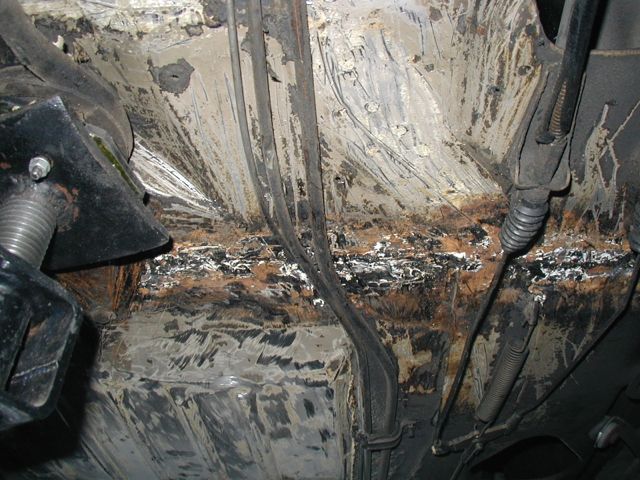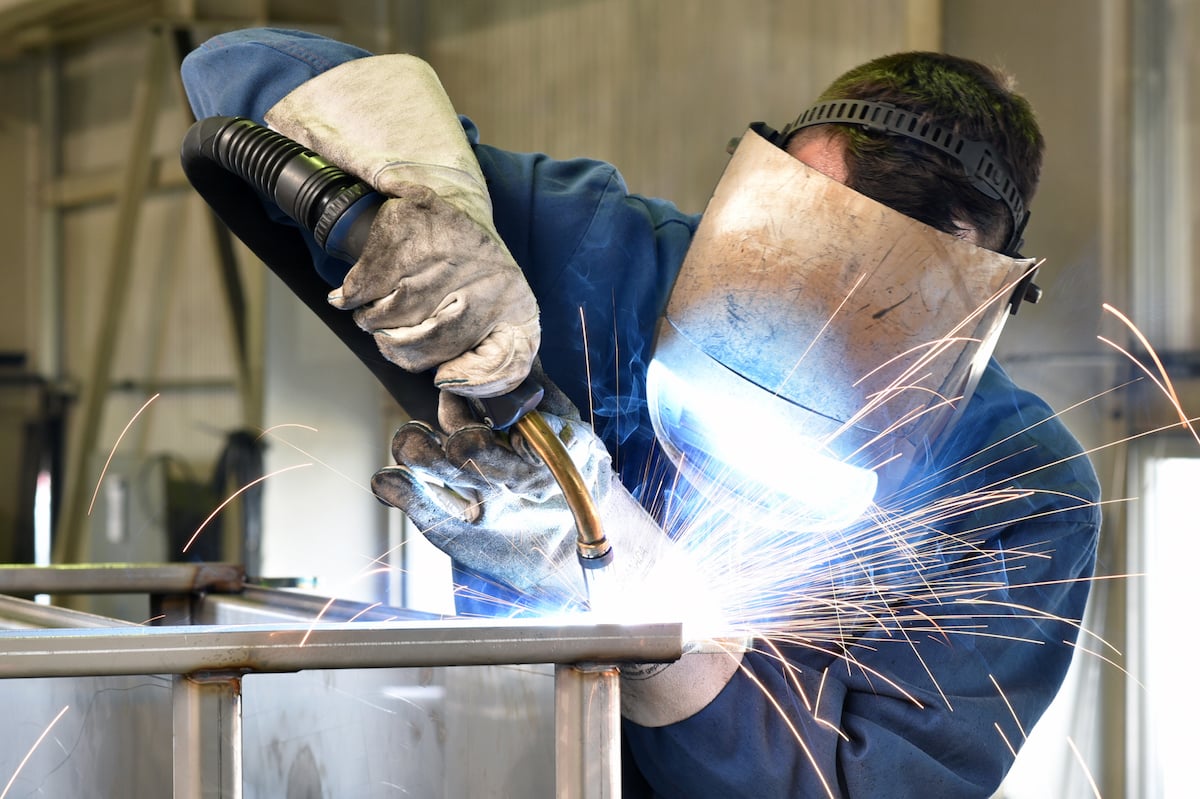Everything about Welding: Secret Insights Into Techniques and Ideal Practices for Success
Welding encompasses a selection of techniques, each suited for details materials and applications. Comprehending these techniques, such as GMAW, SMAW, and TIG, is essential for attaining suitable results. The appropriate tools and safety and security techniques can not be forgotten. As prep work and repairing play essential roles in the welding process, mastering these elements can significantly boost the quality of the final product. What are the essential factors that assure an effective weld?
Comprehending Different Welding Methods
Welding techniques encompass a selection of techniques, each suited to particular applications and materials. Amongst the most common strategies are Gas Metal Arc Welding (GMAW), Protected Metal Arc Welding (SMAW), and Tungsten Inert Gas Welding (TIG) GMAW, likewise known as MIG welding, is prominent for its speed and flexibility, making it excellent for thin products. SMAW, or stick welding, is favored for its simplicity and efficiency in outside atmospheres, especially with thicker steels. TIG welding supplies precision and control, making it ideal for complex job and non-ferrous steels (Fabrication). Each technique has its distinct benefits and factors to consider, enabling welders to pick the very best technique based on the project's requirements, material type, and desired results. Understanding these strategies is vital for successful welding
Necessary Welding Devices and Devices
While different welding strategies need specific skills, the appropriate tools and devices are just as vital for attaining quality results. Necessary welding equipment includes welding devices, which differ relying on the strategy-- such as MIG, TIG, or stick welding. Safety gear, consisting of aprons, gloves, and headgears, warranties safety and security and convenience during the process. In enhancement, components and clamps aid safeguard products in place, making sure accuracy in welds. Consumables like welding poles, cord, and securing gas are additionally essential parts that affect the top quality of the weld. Devices such as grinders and cutters assist in surface preparation and post-weld finishing, adding to a professional outcome. Investing in top notch tools eventually boosts the performance and performance of welding jobs.
Security Practices in Welding
Correct security practices are essential in the welding sector to shield employees from prospective risks. Welders must wear ideal individual protective devices (PPE), including headgears with proper shading, gloves, and flame-resistant clothes. Appropriate ventilation is crucial to minimize exposure to unsafe fumes and gases created throughout the welding procedure. Furthermore, workers should be educated in the appropriate handling of welding tools to stop mishaps. Fire precaution, such as keeping combustible products far from the welding area and having fire extinguishers conveniently offered, are needed. Regular assessments of equipment and offices can help identify prospective dangers before they bring about accidents. By sticking to these safety and security methods, welders can develop a much safer working setting and minimize dangers connected with their trade.
Readying Products for Welding
Preparing products for welding is an essential action that substantially affects the quality and stability of the last item (Fabrication). Appropriate preparation includes cleansing the surface areas to get rid of contaminants such as rust, oil, and dust, which can compromise the weld. Strategies such as grinding, sanding, or using solvents are commonly utilized to accomplish a clean surface area. Additionally, guaranteeing that the products mesh comfortably is important; spaces can cause weak welds. It's additionally essential to think about the placement and positioning of the elements, as this will impact the convenience of welding and the final outcome. Picking the appropriate filler product and ensuring compatibility with the base metals is essential for accomplishing strong, durable welds.
Tips for Getting High-Quality Welds
Attaining premium welds requires interest to information and adherence to best methods throughout the welding process. Proper joint preparation is necessary, making sure surfaces are clean and complimentary from impurities. Selecting the proper filler product and welding method based upon the base steels is essential for suitable bonding. Maintaining regular traveling speed and angle while welding can protect against defects and advertise uniformity. Additionally, managing heat input is important; extreme warmth can cause warping and deteriorated joints. Regularly inspecting the welds during the process permits instant adjustments if necessary. Ultimately, utilizing proper post-weld therapies, such as cleaning her response and tension relief, can improve the resilience and stability of the weld, eventually ensuring an effective outcome.
Troubleshooting Usual Welding Issues
Welding frequently presents difficulties that can influence the high quality and honesty of the end product. Common concerns such as porosity, inconsistent weld grains, and overheating can occur, each requiring details repairing techniques. Understanding these problems is necessary for welders to boost their skills and attain optimal outcomes.
Porosity Troubles Described
Although porosity can commonly be forgotten, it stays an important concern in welding that can jeopardize the integrity of a completed product. Porosity describes the visibility of little gas pockets within the weld grain, which can lead and deteriorate the joint to early failing. This trouble typically occurs from contaminants, dampness, or incorrect shielding gas insurance coverage during the welding procedure. To mitigate porosity, welders ought to confirm that the base materials are dry and clean, use appropriate securing gases, and preserve consistent welding criteria. Routinely checking the devices and setting can likewise assist recognize potential issues prior to they materialize in the weld. Dealing with porosity effectively is important for accomplishing strong, resilient welds that satisfy high quality criteria.

Inconsistent Weld Beads
Irregular weld grains can considerably impact the high quality and toughness of a completed product. Numerous elements add to this problem, consisting of improper travel rate, inaccurate amperage setups, and irregular electrode angles. When the welder moves too quickly, a bead might show up narrow and lack penetration, while moving too slowly can cause too much build-up. Furthermore, utilizing the incorrect amperage can cause either undercutting or too much spatter, both of which concession weld stability. The welder's strategy, such as irregular lantern motion, can additionally result in uneven bead appearance. To mitigate these problems, welders ought to focus on keeping stable, regulated activities and ensuring proper equipment setups to attain harmony in their welds. Uniformity is vital to achieving strong and reliable welds.
Getting Too Hot and Warping Issues
Too much warmth during the welding process can lead to significant overheating and buckling issues, impacting the structural integrity of the workpiece. These problems usually manifest as distortion, which can compromise alignment and fit-up, making further setting up testing. Elements adding to overheating consist of the choice of welding criteria, such as voltage and travel rate, in addition to the kind of material being welded. To reduce these problems, welders need to maintain constant traveling speed and proper heat input while keeping an eye on the work surface temperature. In addition, preheating or post-weld warmth therapy can help minimize stress and anxieties triggered by rapid air conditioning - Belgrade Welding. Regular examination and adherence to best methods are vital in stopping special info overheating and making certain the durability and integrity of bonded frameworks
Frequently Asked Inquiries
What Are the Job Opportunities in the Welding Market?
The welding sector offers varied career opportunities, consisting of settings as welders, teachers, designers, and examiners. Professionals can operate in production, building and construction, aerospace, and vehicle sectors, gaining from solid demand and competitive incomes in different duties.
Just How Can I Boost My Welding Rate Without Compromising Quality?
To boost welding rate without giving up quality, one must practice reliable methods, maintain equipment, enhance settings, and improve hand-eye control. Regular training and looking for feedback can also significantly add to accomplishing faster, high-quality welds.
What Qualifications Are Available for Welders?
Numerous qualifications exist for welders, including about his those from the American Welding Culture (AWS), the National Center for Building Education And Learning and Research Study (NCCER), and numerous industry-specific organizations. These credentials boost employability and demonstrate skill effectiveness.
How Does Welding Impact the Characteristics of Metals?
Welding affects the residential properties of steels by altering their microstructure, which can bring about adjustments in toughness, ductility, and solidity. Warm input and air conditioning rates throughout the procedure greatly influence these product characteristics.
Can I Bonded Dissimilar Metals With Each Other?

Comments on “How overheating compromises welds and Montana Mobile Welding and Repair Welding’s approach to fix it”